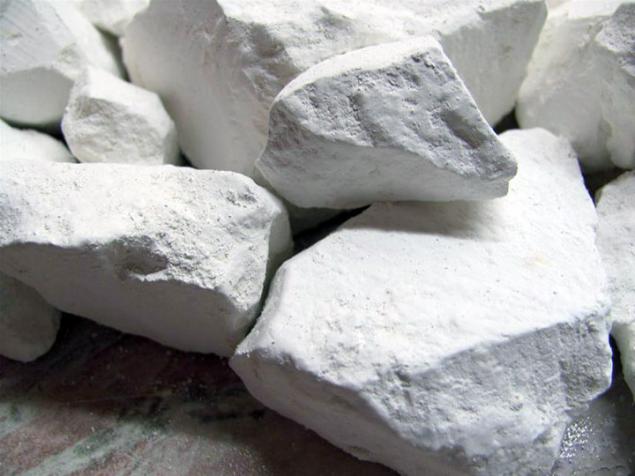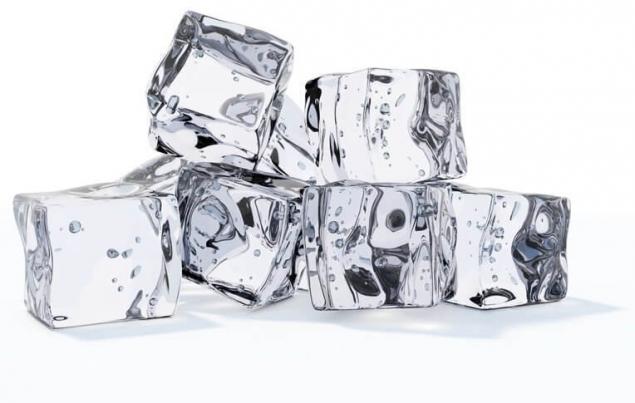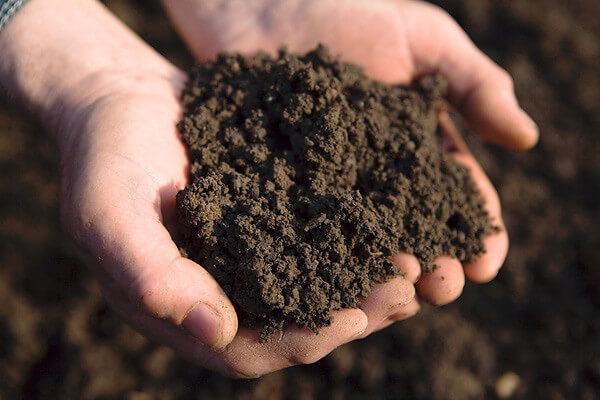2007
What is behind the desire to eat chalk
Briefly:
1. Why do people eat chalk? Whether it is dangerous?
Answer: it is an ancient reflex for pest control and (or) a sign of a lack of trace elements.
2. Why do people love to chew on ice?
Answer: it is an ancient reflex to improve the blood supply to the brain, a sign of iron deficiency anemia, hypotension or decreased tone
.
A long time ago I read a book on medieval Tibetan medicine and I remember a phrase that pregnant women can eat anything: ground, ice, chalk, and you can not prevent them from doing. Then I learned that eating the ice is not only pregnant women, people eat the earth and a lot more then.
The appearance of the whims of many consider almost inevitable sign of an interesting situation. There is no single explanation for this phenomenon is not. Without doubt, great importance is hormonal changes. Increased levels of progesterone that affects the balance of macro- and micronutrients, which changes the reactivity of the nervous system. Progesterone has a direct impact on emotions, changing attitudes to certain events, substances, products, and actions. In addition, great importance is also the fact of pregnancy, changing the ratio of women to themselves, their importance and needs.

We now focus on the more serious problem. Pick hlorotika - craving for eating non-edible things really: chalk, lime, earth, wallpaper, and other things, can be a sign of serious disorders in the body. If you both want to smell the exhaust gases, means for removal of a varnish or continuously washed concrete floor - you need to contact your doctor.
Some children due to their rapid growth and are forced to suffer deficiency of the mineral. From this we can conclude that lack of calcium is necessary to balance the food. According to the qualified doctors in the food consumed only pharmacy chalk. It is called "calcium gluconate".
The desire to eat chalk may occur when the calcium in the body is in short supply. It may also indicate a low level of hemoglobin. In this case, you should see a specialist. Only a physician can direct to the necessary tests and, especially, at the blood test. Based on laboratory data specialist is likely to prescribe calcium with the addition vit.D3. These two components are interdependent - calcium without vitamin is not absorbed in the body.
In one study involved more than 400 women who have ever been pregnant or in a position at this time. All participants were interviewed, some unusual and even weird food habits followed them during pregnancy. And the results have been truly shocking. Soap, polystyrene, chalk and even the ashes - it is only a partial list of those items that pregnant women tried to stuff it into his mouth. Among other strange drafts and cravings were: pepper, raw onions, licorice root, sardines and ice
. One of the women interviewed who had never smoked, she said that she liked the cigarette ash there. Her husband smoked, and one terrible night, looking at the ashtray, she realized that she wants her to lick. And at that moment it really seemed to her incredibly delicious.
Of course, the researchers struck primarily the way in which non-food items favored pregnant women: the ashes, chalk, polystyrene. Importantly, all of the products that are called women had a very strong and specific taste. Among others: peppers, licorice, soap, horseradish, etc.
It seems that only pregnant women sometimes suffer perverted appetite, but recent studies have shown that an unexpectedly large number of men suffer from a disorder called peak, when there is an appetite for inedible things such as dirt, chalk or sand.
Pica, the eating of human earth, ashes, dirt, etc., - a phenomenon that has long occupied the minds of scientists. "People who eat the earth" marked the first time even Hippocrates, ie 2 000 years ago. Since then, cases geophagic been seen more and more often, and now, according to reputable sources, no continent and no country where this strange phenomenon was not noted.
Conducted in Madagascar, where the peak - a fairly common phenomenon, studies have shown that there is a nation where the practice is prevalent among men inedible, scientists say in the world. Why there was such disorder in men, because it usually occurs in pregnant women or children?
"I think that previous studies have simply ignored the men and most of the pregnant women studied," - said study author Christopher Golden (Christopher Golden), the eco-epidemiology. Traditionally, research geophagic (land use) and the peak described that this disease affects pregnant women or children.
In 2009, Golden and his colleagues studied the behavior of some members of the 16 villages of Madagascar, which are located in Makira reserve. were women among research participants, and men. It was found that sometimes they consume 13 inedible matter including sand, earth, chicken manure, crude rice, crude cassava root, coal, ash and salt per se.
Approximately 53 per cent of the villagers surveyed reported that they eat inedible things. Among adult men peak was observed in 63 percent. Contrary to the stereotype, less than one percent of pregnant women reported that they eat inedible things only during pregnancy.
Some people have claimed that eating these things because of their medicinal properties, especially to get rid of stomach problems, Golden said. Many believe that the peak of benefits of the body as a whole. Previously, scientists believed that there are two reasons for the peak of practice: fill micronutrient deficiencies and cleanse the digestive system, to get rid of worms.
Micronutrient deficiencies can be explained in the case of pregnant women and children, their diet need more of certain nutrients than other people's diet. However, scientists can not prove that the human body is really able to absorb minerals from the soil, so the peak, according to Golden, completely useless for health.
Pick is not limited to the rural population in developing countries. For example, many Americans also eat inedible things, says Golden. "My friend from college often ate chalk, - he said. - This is a fairly common phenomenon, although it is a shame, therefore, speak of this rare ".
Cleveland Clinic psychologist Susan Albers (Susan Albers) says: "Pick - a disorder of appetite, which draws less attention and is less studied than other disorders associated with food, such as anorexia and bulimia. However, this study disorder is important because it can lead to serious health problems due to the fact that, together with the body inedible things can get harmful toxins. "
During the famine in the Volga region in 1920-1921 gg. in many places it has been extended zemleedenie, and the earth, mostly clay, sold on the market as an edible product. Dravert wrote that in the clay, which fed the inhabitants of the Samara province, contained a large amount of organic matter decay products. As it turned out, it was the sapropel that used by humans for food since ancient times.

Dravert mentioned Venezuela Indians who lived in the basin. Orinoco, which at 2-3 months when the flood have been cut off from the mainland and were forced to eat a silty clay, which is roasted over a fire. On average, one person would eat about 2 cups of sludge daily. Clays are generally popular food people in many regions of the Earth - they ate on the shore of Guinea and the Antilles, in Persia, on the island of Java, in New Caledonia, and India, Bolivia, Siberia, etc.
. The use of certain types of minerals associated with religious rites. For example, China has enjoyed great popularity diatomaceous earth, it was called "black food" or "ground rice". Diatomites - rocks consisting mainly of siliceous remains of diatoms, which are also used as medicine and as food. In ancient times it was believed that the diatomaceous earth has a supernatural origin and is the food of dragons and immortal, so its use should positively affect the health and welfare of the faithful.
In Java, it is believed that clay facilitates the flow of labor and reduce the number of complications, so if there is no woman eating pottery shards. Pregnant women from a tribe that inhabits the slopes of Kenya in Africa eat "white soil" of the ant heap or "black soil" of the termite mounds.
Minerals in food use not only the people. Stones have been known to swallow many birds, especially the family of chicken, as well as fish, seals, walruses and dolphins (from the stomach of one of them was recovered nearly 10 kg of stones and pebbles). The purpose of these stones-gastroliths - promote chafing food and therefore digestion.
Places where the characteristic signs of the constant appearance of wild animals for use as food earthy substances in the Russian-language literature called "zverovye salt licks." The English-language synonymous - mineral lick. In tyurskoyazychnoy environment such places are called - kudyury. Aside from solid mineral substances zverovyh solonetzes animals often drink mineralized water of the source. This fact, in our opinion, is relevant only to the sodium feeding.
Many hoofed ruminants, less boars and bears, visit salt licks, especially in spring and autumn. This is due to the need for mineral supplements, but apparently not only. Even if wild ungulates feed table salt, they still visit salt licks. The scientist-zoologist D.Shaposhnikov believes that the salt licks are not only a source of salt, but also other mineral substances necessary for the normalization of the gastrointestinal tract, especially in the period of transition from rough winter feed on succulent summer. During this period the animals originate massive digestive disorders.
It should be noted that many of the rock-forming minerals and their mixtures have a positive effect on the symbiotic microflora of animal intestines, normalize the composition and concentration of digestive juice, promote absorption of feed, heal wounds and ulcers of the stomach and intestines, improve the status of the immune system as a whole.
Despite the relative prevalence of the phenomenon, scientists are still unable to agree on the reasons that motivate people to have land. However, among the many versions of a triple causing the greatest confidence. The first suggests that eating inedible land helps to cope with a sharp hunger although no nutrients the body is not receiving, from acute hunger spasms fails to time to get rid
. The second hypothesis, by contrast, talks about the nutrients that can only be removed from the land; they act as a kind of trace elements of iron, zinc or calcium. Finally, the third hypothesis gives eating ground for such utter defense that protects us from the effects of pathogens and plant toxins.
Researchers from Cornell University (USA) decided to find out which of the three hypotheses is more like the truth. They undertook an analysis of 480-odd cases geophagic described with missionary times. Geophagy people have not seen from hunger and from the needs of the body in rare trace elements. It is simply the protection of the digestive tract from parasites.
The first hypothesis was untenable because the cases were observed eating the earth even when the food was plenty. In addition, people ate a small amount of land that could not fill the stomach and prevent hunger. Theory about how to obtain a nutrient soil and is not justified - the data suggest that the most preferred substrate for geophagic is clay, which is poor in micronutrients
. By the way, if it was a way to replenish the calcium reserves, geophagy have flourished among children and the elderly, when calcium needs are great, but the statistics do not confirm. Some found a relationship between anemia and geophagy, but studies have shown that people continue to have the land and if the lack of iron replenished. Moreover, clay generally more prone to bind nutrients from food, making them unavailable for absorption. As a result, scientists have stopped at that eats the clay has a protective function.
Particular attention should be paid to the ice. Pregnant women, and some people experience varying degrees of desire to eat ice licking icicles. Some authors have reported that it is simply the result of iron deficiency.
One form of peaks called Pagophagia, it means - compulsive urge to chew ice. Although the vast chisslo peak remains a mystery to scientists, the new theory may explain why some people are talking about iron-burning desire to chew on frozen food and ice. Research has shown that ice resolution provides enhancement of cognitive abilities in some people with iron deficiency anemia.
Melissa Hunt, a clinical psychologist from the University of Pennsylvania, gave as iron-deficient and healthy participants in a cup of ice or warm water before they have passed the 22-minute test of attention (for the diagnosis of attention deficit hyperactivity disorder). She found that iron-participants show the same results as healthy participants when they drank a bowl of ice; if they drank a cup of warm water, they were significantly worse result. Meanwhile, there was no difference in healthy participants.
Hunt and her colleagues concluded that the ice helps to improve the cognitive abilities and attention of people with iron deficiency may, to some extent, and other people.
This phenomenon is called the mammalian diving reflex (as a possible cause of action of ice). When immersed in water, the majority of vertebrates, air-breathing, slowing down the frequency of heart rate and constrict blood vessels in the hands and feet. This reduces the oxygen supply to the periphery of the body, keeping it to the vital organs, including the brain.
It is a kind of rudimentary, but preserved and people reflex. It is important to note that the reflex is triggered in a person having contact with the cold water, but not warm. So may resorption ice cubes may increase blood and oxygen supply to the brain. For those who have enough iron, such a benefit is unlikely.
Author: Andrew Beloveshkin
1. Why do people eat chalk? Whether it is dangerous?
Answer: it is an ancient reflex for pest control and (or) a sign of a lack of trace elements.
2. Why do people love to chew on ice?
Answer: it is an ancient reflex to improve the blood supply to the brain, a sign of iron deficiency anemia, hypotension or decreased tone
.

A long time ago I read a book on medieval Tibetan medicine and I remember a phrase that pregnant women can eat anything: ground, ice, chalk, and you can not prevent them from doing. Then I learned that eating the ice is not only pregnant women, people eat the earth and a lot more then.
The appearance of the whims of many consider almost inevitable sign of an interesting situation. There is no single explanation for this phenomenon is not. Without doubt, great importance is hormonal changes. Increased levels of progesterone that affects the balance of macro- and micronutrients, which changes the reactivity of the nervous system. Progesterone has a direct impact on emotions, changing attitudes to certain events, substances, products, and actions. In addition, great importance is also the fact of pregnancy, changing the ratio of women to themselves, their importance and needs.

We now focus on the more serious problem. Pick hlorotika - craving for eating non-edible things really: chalk, lime, earth, wallpaper, and other things, can be a sign of serious disorders in the body. If you both want to smell the exhaust gases, means for removal of a varnish or continuously washed concrete floor - you need to contact your doctor.
Some children due to their rapid growth and are forced to suffer deficiency of the mineral. From this we can conclude that lack of calcium is necessary to balance the food. According to the qualified doctors in the food consumed only pharmacy chalk. It is called "calcium gluconate".
The desire to eat chalk may occur when the calcium in the body is in short supply. It may also indicate a low level of hemoglobin. In this case, you should see a specialist. Only a physician can direct to the necessary tests and, especially, at the blood test. Based on laboratory data specialist is likely to prescribe calcium with the addition vit.D3. These two components are interdependent - calcium without vitamin is not absorbed in the body.
In one study involved more than 400 women who have ever been pregnant or in a position at this time. All participants were interviewed, some unusual and even weird food habits followed them during pregnancy. And the results have been truly shocking. Soap, polystyrene, chalk and even the ashes - it is only a partial list of those items that pregnant women tried to stuff it into his mouth. Among other strange drafts and cravings were: pepper, raw onions, licorice root, sardines and ice
. One of the women interviewed who had never smoked, she said that she liked the cigarette ash there. Her husband smoked, and one terrible night, looking at the ashtray, she realized that she wants her to lick. And at that moment it really seemed to her incredibly delicious.
Of course, the researchers struck primarily the way in which non-food items favored pregnant women: the ashes, chalk, polystyrene. Importantly, all of the products that are called women had a very strong and specific taste. Among others: peppers, licorice, soap, horseradish, etc.
It seems that only pregnant women sometimes suffer perverted appetite, but recent studies have shown that an unexpectedly large number of men suffer from a disorder called peak, when there is an appetite for inedible things such as dirt, chalk or sand.
Pica, the eating of human earth, ashes, dirt, etc., - a phenomenon that has long occupied the minds of scientists. "People who eat the earth" marked the first time even Hippocrates, ie 2 000 years ago. Since then, cases geophagic been seen more and more often, and now, according to reputable sources, no continent and no country where this strange phenomenon was not noted.
Conducted in Madagascar, where the peak - a fairly common phenomenon, studies have shown that there is a nation where the practice is prevalent among men inedible, scientists say in the world. Why there was such disorder in men, because it usually occurs in pregnant women or children?
"I think that previous studies have simply ignored the men and most of the pregnant women studied," - said study author Christopher Golden (Christopher Golden), the eco-epidemiology. Traditionally, research geophagic (land use) and the peak described that this disease affects pregnant women or children.
In 2009, Golden and his colleagues studied the behavior of some members of the 16 villages of Madagascar, which are located in Makira reserve. were women among research participants, and men. It was found that sometimes they consume 13 inedible matter including sand, earth, chicken manure, crude rice, crude cassava root, coal, ash and salt per se.
Approximately 53 per cent of the villagers surveyed reported that they eat inedible things. Among adult men peak was observed in 63 percent. Contrary to the stereotype, less than one percent of pregnant women reported that they eat inedible things only during pregnancy.
Some people have claimed that eating these things because of their medicinal properties, especially to get rid of stomach problems, Golden said. Many believe that the peak of benefits of the body as a whole. Previously, scientists believed that there are two reasons for the peak of practice: fill micronutrient deficiencies and cleanse the digestive system, to get rid of worms.
Micronutrient deficiencies can be explained in the case of pregnant women and children, their diet need more of certain nutrients than other people's diet. However, scientists can not prove that the human body is really able to absorb minerals from the soil, so the peak, according to Golden, completely useless for health.
Pick is not limited to the rural population in developing countries. For example, many Americans also eat inedible things, says Golden. "My friend from college often ate chalk, - he said. - This is a fairly common phenomenon, although it is a shame, therefore, speak of this rare ".
Cleveland Clinic psychologist Susan Albers (Susan Albers) says: "Pick - a disorder of appetite, which draws less attention and is less studied than other disorders associated with food, such as anorexia and bulimia. However, this study disorder is important because it can lead to serious health problems due to the fact that, together with the body inedible things can get harmful toxins. "
During the famine in the Volga region in 1920-1921 gg. in many places it has been extended zemleedenie, and the earth, mostly clay, sold on the market as an edible product. Dravert wrote that in the clay, which fed the inhabitants of the Samara province, contained a large amount of organic matter decay products. As it turned out, it was the sapropel that used by humans for food since ancient times.

Dravert mentioned Venezuela Indians who lived in the basin. Orinoco, which at 2-3 months when the flood have been cut off from the mainland and were forced to eat a silty clay, which is roasted over a fire. On average, one person would eat about 2 cups of sludge daily. Clays are generally popular food people in many regions of the Earth - they ate on the shore of Guinea and the Antilles, in Persia, on the island of Java, in New Caledonia, and India, Bolivia, Siberia, etc.
. The use of certain types of minerals associated with religious rites. For example, China has enjoyed great popularity diatomaceous earth, it was called "black food" or "ground rice". Diatomites - rocks consisting mainly of siliceous remains of diatoms, which are also used as medicine and as food. In ancient times it was believed that the diatomaceous earth has a supernatural origin and is the food of dragons and immortal, so its use should positively affect the health and welfare of the faithful.
In Java, it is believed that clay facilitates the flow of labor and reduce the number of complications, so if there is no woman eating pottery shards. Pregnant women from a tribe that inhabits the slopes of Kenya in Africa eat "white soil" of the ant heap or "black soil" of the termite mounds.
Minerals in food use not only the people. Stones have been known to swallow many birds, especially the family of chicken, as well as fish, seals, walruses and dolphins (from the stomach of one of them was recovered nearly 10 kg of stones and pebbles). The purpose of these stones-gastroliths - promote chafing food and therefore digestion.
Places where the characteristic signs of the constant appearance of wild animals for use as food earthy substances in the Russian-language literature called "zverovye salt licks." The English-language synonymous - mineral lick. In tyurskoyazychnoy environment such places are called - kudyury. Aside from solid mineral substances zverovyh solonetzes animals often drink mineralized water of the source. This fact, in our opinion, is relevant only to the sodium feeding.
Many hoofed ruminants, less boars and bears, visit salt licks, especially in spring and autumn. This is due to the need for mineral supplements, but apparently not only. Even if wild ungulates feed table salt, they still visit salt licks. The scientist-zoologist D.Shaposhnikov believes that the salt licks are not only a source of salt, but also other mineral substances necessary for the normalization of the gastrointestinal tract, especially in the period of transition from rough winter feed on succulent summer. During this period the animals originate massive digestive disorders.
It should be noted that many of the rock-forming minerals and their mixtures have a positive effect on the symbiotic microflora of animal intestines, normalize the composition and concentration of digestive juice, promote absorption of feed, heal wounds and ulcers of the stomach and intestines, improve the status of the immune system as a whole.
Despite the relative prevalence of the phenomenon, scientists are still unable to agree on the reasons that motivate people to have land. However, among the many versions of a triple causing the greatest confidence. The first suggests that eating inedible land helps to cope with a sharp hunger although no nutrients the body is not receiving, from acute hunger spasms fails to time to get rid
. The second hypothesis, by contrast, talks about the nutrients that can only be removed from the land; they act as a kind of trace elements of iron, zinc or calcium. Finally, the third hypothesis gives eating ground for such utter defense that protects us from the effects of pathogens and plant toxins.
Researchers from Cornell University (USA) decided to find out which of the three hypotheses is more like the truth. They undertook an analysis of 480-odd cases geophagic described with missionary times. Geophagy people have not seen from hunger and from the needs of the body in rare trace elements. It is simply the protection of the digestive tract from parasites.
The first hypothesis was untenable because the cases were observed eating the earth even when the food was plenty. In addition, people ate a small amount of land that could not fill the stomach and prevent hunger. Theory about how to obtain a nutrient soil and is not justified - the data suggest that the most preferred substrate for geophagic is clay, which is poor in micronutrients
. By the way, if it was a way to replenish the calcium reserves, geophagy have flourished among children and the elderly, when calcium needs are great, but the statistics do not confirm. Some found a relationship between anemia and geophagy, but studies have shown that people continue to have the land and if the lack of iron replenished. Moreover, clay generally more prone to bind nutrients from food, making them unavailable for absorption. As a result, scientists have stopped at that eats the clay has a protective function.
Particular attention should be paid to the ice. Pregnant women, and some people experience varying degrees of desire to eat ice licking icicles. Some authors have reported that it is simply the result of iron deficiency.
One form of peaks called Pagophagia, it means - compulsive urge to chew ice. Although the vast chisslo peak remains a mystery to scientists, the new theory may explain why some people are talking about iron-burning desire to chew on frozen food and ice. Research has shown that ice resolution provides enhancement of cognitive abilities in some people with iron deficiency anemia.
Melissa Hunt, a clinical psychologist from the University of Pennsylvania, gave as iron-deficient and healthy participants in a cup of ice or warm water before they have passed the 22-minute test of attention (for the diagnosis of attention deficit hyperactivity disorder). She found that iron-participants show the same results as healthy participants when they drank a bowl of ice; if they drank a cup of warm water, they were significantly worse result. Meanwhile, there was no difference in healthy participants.
Hunt and her colleagues concluded that the ice helps to improve the cognitive abilities and attention of people with iron deficiency may, to some extent, and other people.
This phenomenon is called the mammalian diving reflex (as a possible cause of action of ice). When immersed in water, the majority of vertebrates, air-breathing, slowing down the frequency of heart rate and constrict blood vessels in the hands and feet. This reduces the oxygen supply to the periphery of the body, keeping it to the vital organs, including the brain.
It is a kind of rudimentary, but preserved and people reflex. It is important to note that the reflex is triggered in a person having contact with the cold water, but not warm. So may resorption ice cubes may increase blood and oxygen supply to the brain. For those who have enough iron, such a benefit is unlikely.
Author: Andrew Beloveshkin























